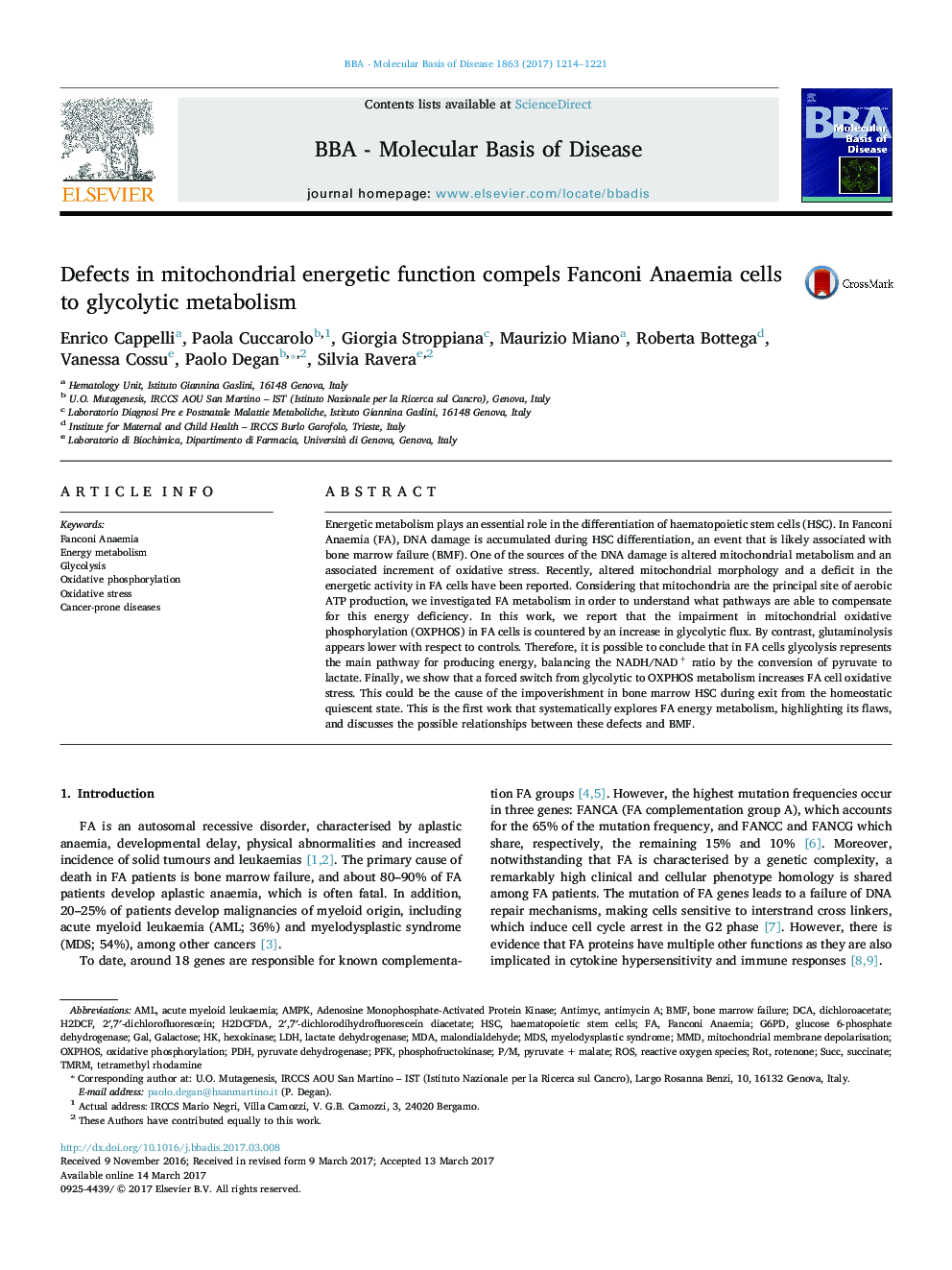| Article ID | Journal | Published Year | Pages | File Type |
|---|---|---|---|---|
| 5501028 | Biochimica et Biophysica Acta (BBA) - Molecular Basis of Disease | 2017 | 8 Pages |
â¢Glycolysis is the main pathway to produce energy in Fanconi's Anaemia cells.â¢FA cells display defective mitochondrial functionality with energy deficitâ¢A forced switch from glycolytic to oxidative metabolism highlights FA cells weakness.
Energetic metabolism plays an essential role in the differentiation of haematopoietic stem cells (HSC). In Fanconi Anaemia (FA), DNA damage is accumulated during HSC differentiation, an event that is likely associated with bone marrow failure (BMF). One of the sources of the DNA damage is altered mitochondrial metabolism and an associated increment of oxidative stress. Recently, altered mitochondrial morphology and a deficit in the energetic activity in FA cells have been reported. Considering that mitochondria are the principal site of aerobic ATP production, we investigated FA metabolism in order to understand what pathways are able to compensate for this energy deficiency. In this work, we report that the impairment in mitochondrial oxidative phosphorylation (OXPHOS) in FA cells is countered by an increase in glycolytic flux. By contrast, glutaminolysis appears lower with respect to controls. Therefore, it is possible to conclude that in FA cells glycolysis represents the main pathway for producing energy, balancing the NADH/NAD+ ratio by the conversion of pyruvate to lactate. Finally, we show that a forced switch from glycolytic to OXPHOS metabolism increases FA cell oxidative stress. This could be the cause of the impoverishment in bone marrow HSC during exit from the homeostatic quiescent state. This is the first work that systematically explores FA energy metabolism, highlighting its flaws, and discusses the possible relationships between these defects and BMF.
